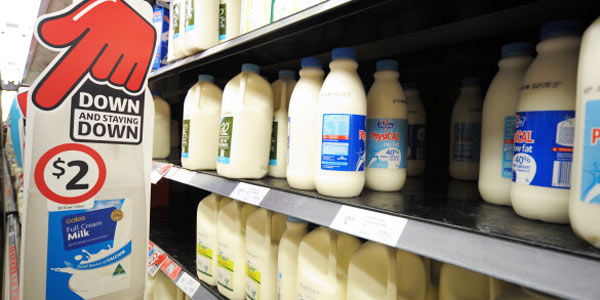By Ben Bennett, ADF President
They say transparency builds trust.
It’s curious then that some processors and their representatives in the dairy industry have been calling to expedite a scheduled review of the ACCC Dairy Code of Conduct without clearly articulating their reasons.
All the more curious given the timing, when we have competitive milk prices (which are set by the processors themselves and the marketplace).
It’s even more curious given some of the recent misinformation in the media, suggesting the code is responsible for high retail dairy prices, and that this is in effect driving a high cost of living, as well as exacerbating the differential between high domestic prices and cheap imports from overseas.
All this suggests that processors are feeling price risk pressure and that it is the code itself that is protecting farmers from this risk being passed down the supply chain in the form of price step-downs this season.
Could it be that processors would like to see the floor price removed from the code? Could it be that they are opportunistically using media around the cost-of-living crisis and the government’s subsequent supermarket inquiries to lobby for an earlier review of the code?
Let’s be clear, it is the processors themselves who have bid-up the price of milk to secure supply in the current market. This is the marketplace at work.
The code does not set the price. It provides the rigour around commercial contracts in the form of milk supply agreements.
Processors are required to honour the minimum price they themselves set after they have locked in a contract with the farmer. The processor can increase prices, and in certain exceptional circumstances, if justified, they can also decrease prices.
As the Australian Competition and Consumer Commission (ACCC) has stated, the code is the thing that “imposes minimum standards of conduct on processors and dairy farmers”.
These standards are needed. We know that’s the case, having lived through previous claw-backs and the subsequent impact on the industry. These led to farms leaving the industry and the declining milk pool, which is now ironically coming home to roost as processors compete for that reduced milk supply.
The Australian Dairy Products Federation (ADPF) commenced the campaign with its executive officer in The Weekly Times advocating that “a further three-year delay (on reviewing the code) is simply unacceptable”.
Yet more articles in mainstream urban press have attempted to tarnish the code as a mechanism that inflates prices. We’re now hearing some processors openly push to have the review of the code brought forward.
In an interview on ABC radio, the CEO of one processor was asked for their take on reviewing the code.
They implied the code wasn’t working for all parties, however couldn’t, or wouldn’t, stipulate what exactly he thought was broken.
The processing company in question received a significant fine last year for breaching the code. After the Federal Court finding, the ACCC Chair commented: “We took action because we considered (the processor’s) conduct would reduce transparency in the industry and served to perpetuate systemic bargaining power imbalances between processors and farmers.”
However, neither the processor in question nor the ADPF have articulated why they believe the codes should be reviewed, or why it isn’t working.
Presumably, processors weren’t feeling the price squeeze during the first review to the same degree as they are now.
Regardless, Australian Dairy Farmers (ADF) would like to see processors treat the rest of the industry with respect and engage in good faith when calling for the review of the code to be brought forward.
It’s time to come clean and be transparent!
After all, if it’s so urgent, we deserve to know the underlying reasons.
Is it simply because they want the floor price for milk withdrawn, making it easier for them to drop prices mid-season? Anyone who was dairying in 2016 will remember where that can end up.
Been here before
The code only came into effect just four years ago and has already been reviewed once in late 2021. This review, a separate Senate inquiry into the dairy industry and the ACCC Perishable Goods Inquiry found no evidence of reduction in competition arising from the dairy code.
In fact, they validated its appropriateness with only minor changes recommended. The second dairy code review has been deferred to allow changes from the 2021 review to take effect.
All parties were consulted and had opportunity to provide input during the last review. Plus, the Department of Agriculture, Fisheries and Forestry is already calling for input on the coming review.
Let’s remember that the code does not set prices. It provides rigour and protection for farmers.
Having considered all this, ADF believes the coming review should be completed. Not least to fulfill legislated obligations. However, there’s no need to bring it forward.
The code is protecting dairy farmers, bringing transparency to the market and addressing power imbalances.








